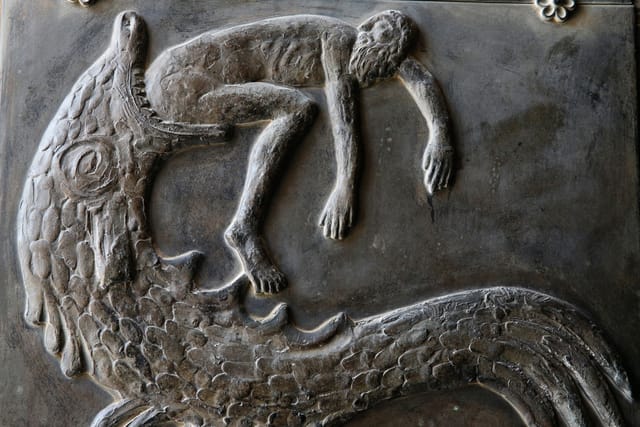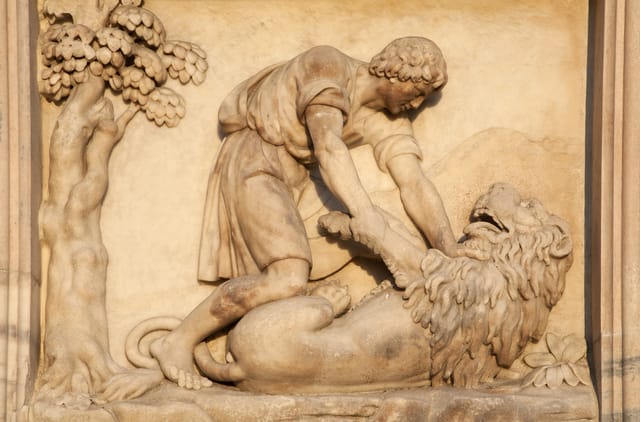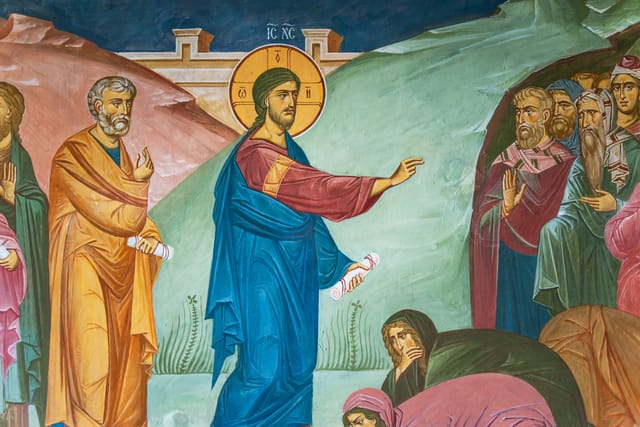The Bible contains some of the most enduring narratives in history, but sometimes cultural depictions and oversimplification lead to misunderstandings about what these stories are actually saying. Here are a few famous Bible stories often misinterpreted, however innocently.
1. Noah’s Ark carried two of every single animal on Earth.

The popularized image is of a packed boat with giraffes poking their heads out, penguins waddling the decks, and every conceivable creature crammed inside. However, the Genesis account specifies two of every kind of unclean animal and seven of each type of clean animal. This distinction leaves room for biological variation within species after the flood.
You may also like: 23 Habits Of Chronically Unhappy People
2. Eve tempted Adam with an apple.
Despite the ubiquity of the apple in artistic depictions, the Bible never specifies what type of fruit it was, Live Science notes. The temptation was not specifically about the fruit itself, but rather the act of disobeying God’s clear instruction not to eat from the Tree of Knowledge of Good and Evil.
Don’t miss out – follow Bolde for exclusive content daily
3. David was a small, unassuming shepherd boy when he defeated Goliath.

While often depicted as a young teenager, the Bible describes David as a “ruddy, and withal of a beautiful countenance, and goodly to look to” when chosen to fight the giant. This suggests he was likely a physically fit young man, perhaps even a seasoned warrior. The focus of the story is not David’s size, but his courage and faith in God.
You may also like: People Who Lack Empathy Often Had These 15 Childhood Experiences
4. The three wise men visited Jesus on the night he was born.

The nativity scene with the wise men offering gifts alongside the shepherds is a classic image, but not strictly Biblical. The Gospel of Matthew mentions wise men bringing gifts of gold, frankincense, and myrrh, but doesn’t specify how many there were or that their visit coincided with Jesus’s birth. They likely arrived sometime later, possibly when he was a toddler.
Don’t miss out – follow Bolde for exclusive content daily
5. Mary Magdalene was a prostitute.

This misconception likely stemmed from conflating this Biblical Mary with a different woman mentioned in the Gospel of Luke referred to as “a sinner.” There’s no scriptural basis for labeling Mary Magdalene as a prostitute. She is described as a devoted follower of Jesus who was healed of demonic possession.
You may also like: 15 Phrases Socially Intelligent People Use To Make An Instant Connection
6. Jonah was swallowed by a whale.

The book of Jonah specifically says he was swallowed by “a great fish.” The type of creature is never identified. Given the limitations of known whales’ throats, the emphasis of the story is more on Jonah’s miraculous survival and his reluctant obedience to God’s mission, rather than on the specific biology of the marine creature.
Don’t miss out – follow Bolde for exclusive content daily
7. Samson’s power came from his long hair.

Samson’s hair was a symbol of his Nazarite vow, which included stipulations for abstaining from wine, not cutting his hair, and avoiding contact with dead bodies. His strength stemmed from his faithfulness to this covenant with God. When Delilah cut his hair, he broke his vow, which caused him to lose God’s protection.
You may also like: Things A Narcissist Does When You Enrage Them
8. Jesus was born on December 25th.

The Bible gives no specific date for Jesus’s birth, per The Washington Post. The December 25th date was likely chosen much later by the early church to coincide with existing winter solstice festivals. Evidence based on descriptions of shepherds tending their flocks at night suggests a springtime birth might be more historically accurate.
Don’t miss out – follow Bolde for exclusive content daily
9. Sodom and Gomorrah were destroyed solely because of homosexuality.

While the story of Sodom and Gomorrah is used as a condemnation of same-sex relationships in some traditions, the Bible paints a picture of a society deeply corrupted beyond just sexual sin. The prophet Ezekiel lists the city’s offenses as pride, gluttony, and a lack of compassion for the poor and needy. It’s a cautionary tale about the destructive consequences of societal wickedness and turning away from God.
You may also like: People Who Rarely Exhibit Empathy Usually Have These 16 Traits
10. The forbidden fruit in the Garden of Eden was about sex.

The act of eating the fruit was about disobedience and humanity’s desire to usurp God’s authority in determining good and evil. While it led to shame and awareness of nakedness, the idea of the forbidden fruit being intrinsically linked to sexuality is a much later interpretation and doesn’t align with the primary themes of the story.
Don’t miss out – follow Bolde for exclusive content daily
11. “God helps those who help themselves.”

This popular catchphrase is never found in the Bible. In fact, the Bible emphasizes God’s grace and aid extended to the helpless. Concepts like dependence on God, His strength made perfect in weakness, and prioritizing faith rather than self-reliance are more recurring scriptural themes.
You may also like: People Who Lack Self-Awareness Frequently Say These 14 Things
12. The Bible is opposed to wealth and prosperity.

There are certainly warnings about the dangers of greed and the love of money in the Bible. However, there are also figures like Abraham, Solomon, and Job who were both blessed with material wealth and upheld as righteous. The focus is more on the heart’s attitude towards wealth – does it become an idol, or is it used for good, stewarded justly, and shared generously?
Don’t miss out – follow Bolde for exclusive content daily
13. Daniel survived the night in a den of lions because the lions weren’t hungry.

The Bible explicitly states that God “shut the mouths of the lions” to protect Daniel. It’s a story emphasizing God’s power over nature and His faithfulness to protect those who remain true to Him, even in the face of certain death.
You may also like: 15 Adult Traits of People Who Were Bullied As Kids
14. Jesus taught “turn the other cheek” means pacifism and never standing up for yourself.

In its context, this teaching was about subverting the expected power dynamics. In a culture where a slap was used to humiliate, turning the other cheek refused to give the abuser that satisfaction and disrupted the cycle of escalation. It’s about asserting one’s dignity and refusing injustice, not meek passivity.
Don’t miss out – follow Bolde for exclusive content daily
15. Judas Iscariot was irredeemably evil.

Judas’ betrayal of Jesus is one of the most infamous acts in history, but the Bible offers hints at his inner conflict. His suicide after being consumed with regret suggests a level of complexity to his character. The story serves as a warning about the danger of greed and the insidious way sin can harden a heart, not necessarily a pronouncement on Judas’ eternal destiny.
You may also like: 30 Things Men Do When They’re Having A Midlife Crisis
16. Everything in life happens for a reason.

This comforting idea isn’t always supported by Scripture. The Bible acknowledges the reality of suffering, meaningless tragedy, and random events in a fallen world. While God can work through even painful circumstances, the belief that every single event is divinely orchestrated for a specific, knowable purpose can sometimes lead to disappointment or a misguided search for hidden meanings in hardship.
Enjoy this piece? Give it a like and follow Bolde on MSN for more!




